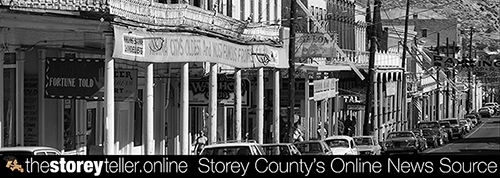A Guest Editorial from Ron Knecht
This is the first of a series of columns summarizing my Controller’s Annual Report (CAR) for fiscal year 2018 (FY18). Based on the state’s official books and records, the CAR provides Nevada citizens, officials and others a summary of key facts, data, analysis and issues addressing Nevada’s fiscal condition and policy challenges.
Here’s the bottom line: Over the last dozen years, state spending has grown faster than Nevada’s economy, thus imposing an ever larger real burden on Nevada families and businesses, whose real incomes declined over that time.
Where Does The Money Go?
Rapid increases in spending on health and social services (HSS) and K-12 education are driving state spending growth. HSS and education (K12 and higher) grew to comprise 79 percent of total state spending of $12.827 billion in FY18, while all other state spending in total declined significantly in real terms.
In FY18, HSS consumed $5.844 billion (46 percent of total state spending), with K-12 education taking $2.344 billion (18 percent) and higher education adding $1.911 billion (15 percent). Their growth totaled $5.360 billion, or 93 percent of the growth of $5.761 billion in total state spending.
All other activities – law enforcement, justice, public safety, transportation, unemployment insurance, general government, regulation, resources, etc. – spent $2.729 billion, or 21 percent of the total. While this total increased 17 percent in nominal dollars, the real per-person spending fell by 25 percent.
With population growing 22 percent since 2006 and inflation of 28 percent, real per-person HSS spending grew 70 percent and real per-student state K-12 outlays rose 24 percent. Real per person transportation spending increased seven percent and real higher education outlays fell six percent. As a result, HSS and K-12 by themselves accounted for 82 percent, or the lion’s share of the increases. Remaining spending on a wide range of government functions fell 34 percent in real per person terms.
Spending Up, Income Down
In contrast to the 70 percent and 24 percent growth rates ion HSS and K-12, the real per person incomes of Nevada families and business (personal income) fell six percent and the Nevada economy (gross state product) dropped 15 percent.
Because state spending grew while incomes shrank, the burden on Nevadans skyrocketed 81 percent for HSS, 29 percent for K-12 and 24 percent for total state spending. It was constant for higher education and it fell 20 percent for all remaining spending, including transportation.
This is quite contrary to the popular myths and narratives one hears from advocates and special interests related to HSS and K-12. They moan endlessly about budget cuts, which means their wish list requests were prudently trimmed back by the budgeting process. Or they trumpet ridiculous hyperbole, such as the claim a few years ago of a Reno Assemblyman that on his watch he witnessed the systematic destruction of K-12. At the time, K-12 spending had grown faster than even HSS.
Advocates and special interests spewing out such claims either have no idea of the facts or cynically don’t care and just blather such false narratives hoping to advance their cause at the expense of the public interest. Next time you hear their claims, ask them to be specific and to document them. They can’t.
More To Come…
Some other key facts on state spending I will address in critical detail in future columns include the following:
- The single largest item in state spending is Medicaid, which sucked up $3.772 billion due to Nevada’s embrace of Obamacare provisions a few years ago. That’s 64.5 percent of total HSS outlays.
- The second largest item is state contributions to county school districts via the Distributive School Account, which reached $1.618 billion in FY18. That’s 69 percent of state K-12 funds.
- Large increases in higher education tuition, fees, grants, contracts and “self-supporting” operations (meal plans, housing, ticket sales, etc.) offset decreases in spending from the state general fund.
- There are no meaningful trends in transportation spending, which is mainly episodic capital investment. Nor in unemployment insurance, which is driven by economic trends and federal policy.
- The tax-and-spend folks claim Nevada has a revenue problem, because they want to increase taxes to continue aggressively raising spending. They are fundamentally wrong: Revenues and sound public policy should govern (limit) spending; spending should not drive up revenues.
Ron Knecht has served as Nevada Controller, a higher education regent and a legislator. He can be reached at RonKnecht@aol.com.
 The Storey Teller News and commentary on what’s really going on in Storey County.
The Storey Teller News and commentary on what’s really going on in Storey County.






Sam Toll,
WOW!
Thank you for the update about what’s
been going on in Nevada.
This is ominous stuff.
Even Sam DNA Dehne did not realize
things had gone so far.
http://www.renocitizen.com/dna.htm
signed
Hashtag Sam DNA Dehne